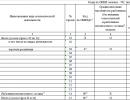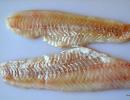South Federal University.
st. B. Sadovaya, 105
The history of the Southern Federal University begins in 1915, when the faculties of the Russian Warsaw Imperial University, opened in 1817 by Russian Emperor Alexander I, were evacuated to the south. The initiator of the transfer of the Warsaw University to Rostov-on-Don was Nikolai Vasilyevich Pariysky (1858-1923). During the 20th century, the university changed its name. Within the framework of the national project “Education”, by order of the Government of the Russian Federation dated November 23, 2006 N161-r and by order of the Ministry of Education and Science of the Russian Federation dated December 4, 2006 N1447, SFU included: Rostov State University, Taganrog State Radio Engineering University, Rostov State Pedagogical University and Rostov State Academy of Architecture and Arts.
general information
As of 2016, the university included 5 academies, 12 educational institutes, 6 faculties, 6 branches and 2 representative offices, as well as 19 innovation-technological and scientific-educational centers, 3, a museum and the Regional Scientific Center of the Russian Academy of Education. As of 2016, the university had over 29,000 students.
On November 19, 2015, the “Neurotechnologies of Perception and Recognition” laboratory was opened, which will develop methods and means for the rapid detection of potentially dangerous substances. This is a joint project of the Foundation for Advanced Research and the Southern Federal University.
Structure
| Academy | Institutes | Faculties | Research institutes and scientific bureaus |
|---|---|---|---|
|
|
|
|
Geography
History of the Southern Federal University
- - Imperial Warsaw University in Rostov-on-Don.
- Evacuated due to the capture of Poland by German troops during the First World War. Composition of faculties:
- Historical and philological
- Medical
- Physics and mathematics
- Evacuated due to the capture of Poland by German troops during the First World War. Composition of faculties:
- - Don University
- May 5 Renamed by Provisional Government Decree No. 1227
- - Don University named after M. P. Bogaevsky
- - North Caucasus State University
- September 30 Renamed by decree of the USSR government
- Faculty of Economics created
- On September 19, by order of the People's Commissariat of Education of the RSFSR, the medical faculty of the university was transformed into the Medical Institute (currently Rostov State Medical University)
- Chemical, geological-botanical and working faculties were formed.
- January 15 The pedagogical and economic faculties were separated and transformed into pedagogical, food industry and economics of exchange and distribution, and financial and economic institutes (currently Rostov State Economic University)
- Geological-soil-geographical and botanical faculties are separated from the geological-botanical faculty.
- - Rostov-on-Don State University
- Renamed due to the dissolution of the North Caucasus Territory and the exit of the Rostov Region from its composition
- - Rostov-on-Don State University named after V.M. Molotov
- The Scientific Research Institute of Physics and Mathematics (NIFMI) and the Scientific Research Institute of Biology (NIIB) were created.
- The university includes a botanical garden.
- On June 15, by the decision of the Council of People's Commissars of the USSR, Rostov University was recognized as a first-category university.
- August The university charter was adopted.
- The Faculty of History and Philology has been restored.
- The Faculty of Law has been restored.
- - Rostov State University
- Renamed by order of the Council of Ministers of the USSR dated December 6, 1957 No. 36333-r
- The Faculty of Economics and Philosophy was created.
- - Rostov State University named after M. A. Suslov
- - Rostov State University
- The Faculty of Psychology was created (Dean Ermakov Pavel Nikolaevich)
- Department of Regional Studies created
- Faculty of High Technologies created
- Until now South Federal University
- Since 2008, the issue of granting the Southern Federal University the status of an autonomous institution has been considered.
History of the names of the Pedagogical Institute of Southern Federal University
- Rostov State Pedagogical Institute
- Created on January 15, 1931 by separation from the North Caucasus State University
- Rostov State Pedagogical Academy
- Rostov State Pedagogical University until 2006
- Academy of Psychology and Pedagogy since 2014
History of names: Engineering and Technology Academy of Southern Federal University
- from 1951 to 1974 - Taganrog Radio Engineering Institute
- from 1974 to 1993 - Taganrog Radio Engineering Institute | Taganrog Radio Engineering Institute named after. V. D. Kalmykova
- from 1993 to 2006 - Taganrog State Radio Engineering University | Taganrog State Radio Engineering University named after. V. D. Kalmykova
- from 2007 to 2012 - Taganrog Technological Institute of the Southern Federal University
- from 2012 to 2013 - Taganrog campus of Southern Federal University
History of the names of the Institute of Architecture and Arts of Southern Federal University
- Rostov State Architectural Institute
- Created in 1988 on the basis of the Faculty of Architecture in (currently
People are attracted to this university primarily because here they can get a high-quality classical education. Some people have a great chance to travel abroad and do an internship at leading foreign partner universities. Applicants choosing SFU are interested, first of all, in what faculties there are here. Before talking about them, it is worth understanding the history of the creation of the university and getting acquainted with its multi-level structure.
Creation of an educational institution and its goals
In 2006, a large Russian university, the Southern Federal University, began operating in Rostov-on-Don. It has absorbed the traditions and knowledge accumulated by other universities, since SFU was founded on the basis of 4 united educational organizations:
- Rostov State University, operating since 1915;
- Rostov Pedagogical University, which began training personnel in 1930;
- operating since 1952;
- Rostov Academy of Architecture and Arts, which appeared in 1988.
The university was created with the aim of preserving and enhancing existing traditions, improving educational services, training highly qualified specialists, and active participation in research and innovation activities.
Structure of the educational organization
Since the Southern Federal University was created on the basis of several universities, it has a multi-level structure. The educational institution has academies, institutes, faculties and other divisions that organize training in specialties.
All existing structural units are combined into 5 large groups related to specific areas of knowledge:
- physics, mathematics and natural sciences;
- engineering direction;
- socio-economic and humanitarian direction;
- direction of education and science in the field of pedagogy and psychology;
- direction of education and science in the field of arts and architecture.

Faculties of physics, mathematics and natural sciences
This group of departments includes the Faculty of Physics. This is one of the largest structural units of the Southern Federal University. This faculty works with schoolchildren. A school of additional education operates on its basis. In it, children from a very early age study interesting science, immerse themselves in various experiments, and become interested in solving problems. After completing their studies at this school, many enter the Faculty of Physics at the Southern Federal University, choosing the most suitable and interesting specialties for themselves.
The Faculty of Chemistry also belongs to the physics, mathematics and natural sciences. On it, students study theory and conduct chemical research in laboratories. Applicants are offered one undergraduate course (“Chemistry”) and one specialty (“Applied and Fundamental Chemistry”). In senior years, students improve their acquired knowledge and skills in the specializations that are most interesting to them, of which there are more than 10.

Faculty of Engineering
The engineering department at the Southern Federal University includes the Faculty of Military Training. Its history began in the 20s of the last century. The currently existing faculty has several main tasks. Within the structure of the Southern Federal University, it must:
- implement military training programs for reserve officers at military departments in military specialties;
- carry out educational activities and work on military-professional orientation of youth.
Military education, which can be obtained at the faculty in question at the Southern Federal University, is considered additional. University students who undergo a medical examination, the stage of professional and psychological selection, and successfully pass physical training standards are accepted for training.
Management department
The Southern Federal University includes faculties related to socio-economic and humanitarian areas. One of these structural units is the Faculty of Management. It appeared in 2014 due to the shortage of management personnel in the region and country. This structural unit was separated from the Faculty of Economics.
For applicants at the Faculty of Management, one direction of bachelor's degree is offered - “Applied Informatics and Mathematics”. Here, students gain knowledge on the use of information technologies and systems in business, mathematical methods for making important management decisions. The proposed direction is characterized by a large amount of project work, students undergo internships, carry out research work and solve important practical problems.

Faculty of Economics
Southern Federal University (Rostov-on-Don) has an economic structural division. It grew out of the Faculty of Economics and Philosophy, which existed at Rostov State University since 1965. Currently, this is a fairly large structural unit, which includes 8 departments, 6 educational and research laboratories, 5 educational centers. The faculty sees its goals as:
- in the quality implementation of the educational process;
- expansion of services;
- development of human resources;
- improving the material and technical base;
- development of the faculty’s research potential;
- development towards national and international recognition.
At the Faculty of Economics, applicants are offered 2 areas of training - “Management” and “Economics”. In the first direction, students study financial and organizational management, business process management strategy, practice and theory of management decision making. At "Economics" students get acquainted with current disciplines. Teachers from different departments may be involved in delivering lectures on one subject. This allows students to develop a systematic vision of ongoing economic processes.

College of Applied Vocational Education
The Southern Federal University aims to train specialists not only with higher education. The structure includes the College of Applied Vocational Education.
This unit began its work in 2015. A college was created on the basis of:
- College of Economics, affiliated with the Higher School of Business;
- College of Arts and Humanities, which was previously part of the Academy of Architecture and Arts.
Directions of preparation in college
This structural unit of the Southern Federal University implements its educational activities in 6 specialties:
- "Information Systems";
- “Folk artistic creativity”;
- “Organization and law of social security”;
- "Banking";
- "Finance";
- “Accounting and economics (by industry).”
In all available areas of training, there is only full-time training. You can enroll in some specialties not only after 11th grade (i.e., on the basis of secondary general education). Persons who have completed 9 grades can also receive secondary vocational education.

In conclusion, it is worth noting that the Southern Federal University provides students with excellent opportunities to receive a quality education. Students can use modern computers, technical equipment and laboratory instruments, communicate with highly qualified teachers and receive from them the necessary theoretical knowledge and practical skills. It is worth noting that SFU students study not only in Rostov-on-Don. The Southern Federal University has branches in Gelendzhik, Zheleznovodsk, Makhachkala, Novoshakhtinsk, and Uchkeken.
License series A No. 283373, reg. No. 9693 dated December 25, 2007
Certificate of state accreditation series AA No. 001070, reg. No. 1043 dated December 29, 2007
Southern Federal University (SFU) is a Russian university, a center of higher education and science in the Southern Federal District of the Russian Federation, located in Rostov-on-Don and Taganrog, Rostov region.
By order of the Government of the Russian Federation of November 23, 2006 N1616-r, as a result of the merger of state educational institutions of higher professional education as structural divisions into the state educational institution of higher professional education "Rostov State University"
- "Rostov State Academy of Architecture and Art",
- "Rostov State Pedagogical University",
- "Taganrog State Radio Engineering University"
Southern Federal University was founded.
SFedU includes four separate industry institutes, a total number of faculties 37, scientific structural divisions 70, including 10 research institutes, as well as design bureaus, shared use centers, educational and scientific laboratories (including joint ones with institutions of the Russian Academy of Sciences), 20 structures of innovation activity (in including 2 pilot production facilities, 2 technology parks, 2 business incubators, 5 collective use centers), etc., which employ about 800 researchers, including 354 candidates and 45 doctors of science. The total number of students is about 56 thousand people.
Faculties:
- Faculty of Architecture (IArchI)
- Department of Regional Studies
- Open Faculty
- Faculty of Radio Engineering (TTI)
- Faculty of Automation and Computer Engineering (TTI)
- Faculty of Lifelong Forms of Education (TTI)
- Faculty of Biology and Soil Science
- Faculty of Military Studies
- Faculty of High Technologies
- Faculty of Geology and Geography
- Faculty of Natural Sciences and Humanities (TTI)
- Faculty of Natural Sciences (FN)
- Faculty of Fine Arts (FA)
- Faculty of Information Security (TTI)
- Faculty of Arts (IArchI)
- Faculty of History
- Faculty of Linguistics and Literature (PI)
- Faculty of Mathematics, Computer Science and Physics (PI)
- Faculty of Mathematics, Mechanics and Computer Science
- Faculty of General Training (IArchI)
- Faculty of Pedagogy and Practical Psychology (PI)
- Faculty of Advanced Studies
- Faculty of Advanced Training and Professional Retraining of Education Workers (PI)
- Psychology faculty
- Faculty of Socio-Historical Education (PI)
- Faculty of Sociology and Political Science
- Faculty of Technology and Entrepreneurship (TE)
- Faculty of Management in Economic and Social Systems (TTI)
- Faculty of Physics
- Faculty of Physical Culture and Sports (PI)
- Faculty of Philology and Journalism
- Faculty of Philosophy and Cultural Studies
- Faculty of Chemistry
- Faculty of Economics, Management and Law in Education (PI)
- Faculty of Economics
- Faculty of Electronics and Instrumentation Engineering (TTI)
- Faculty of Law
Southern Federal University, a leading center for the development of education, science and culture, is a federal higher education institution.
Southern Federal (Rostov) University is traditionally known for developments and research in various fields of science. Significant progress has been made in the analysis and synthesis of a number of organic compounds, the electronic and spatial structure of their molecular structure, in the development of new highly efficient ferroelectric materials and technologies for their production, non-destructive testing methods, theoretical and applied problems of mechanical engineering, construction and architecture, fundamental and applied problems of cybernetics brain, problems of artificial intelligence, automated medical and biological systems, in the development of a new concept of management in a market economy, problems of the dialectics of material and spiritual culture.
International activity The university includes work on training students, interns, graduate students and doctoral students from foreign countries, including on a contract basis, conducting joint scientific research, and exchanging teachers and researchers.
University scientists are actively working on international cooperation programs with colleagues from foreign countries: the USA, Germany, France, Great Britain, Israel, Italy, Yugoslavia, Poland, China, Turkey, Bulgaria, Greece, etc.
The city of Rostov on Don is one of the millionaire cities in Russia. As a rule, the number of large cities in Russia is directly related to their geographical location, which determined further political and economic development.
For Rostov-on-Don, the key moment was the foundation in its place in 1749 Temernitsa Customs by decree of Tsarina Elizabeth Petrovna. Trade with Turkey took place through this customs post, and goods and cargo were transported by water.
Since there were raids on the territory bordering Turkey in the early 60s of the 18th century, by decree of Catherine II, the fortress of St. Dmitry of Rostov was built here. At the end of the 18th century, having lost its military significance, the fortress was transformed into a county town. Rostov-on-Don received its current name in 1806.
The main source of economic development of Rostov-on-Don until the beginning of the 20th century was trade, since the city itself has access to three large seas - the Caspian, Black and Azov. Also located at the junction of Europe and Asia, Rostov has routes to the Mediterranean, the Caucasus and the Middle East.
Sights of Rostov-on-Don
Being at the junction of several cultures and being in the neighborhood of other states, Rostov-on-Don attracts a large number of tourists, both Russian and foreign. Despite the fact that many buildings were destroyed during the Great Patriotic War, most of them were restored and restored in the post-war years.In Rostov-on-Don there are more than half a thousand historical and architectural monuments of the 18th-20th centuries. Attracts a lot of attention from tourists Rostov Cathedral of the Nativity of the Blessed Virgin Mary, built in the mid-19th century and is a smaller copy of the Cathedral of Christ the Savior. The City Hall building, built at the end of the 19th century and made in the Baroque style, as well as the church of the Armenian monastery, built at the end of the 18th century, deserve special attention.
And not far from Rostov-on-Don there is a world-famous historical and archaeological open-air museum Tanais, created on the site of the ancient city of the same name, founded here in the 3rd century BC and being a major center of trade for the peoples inhabiting the Black Sea region, the Azov region, and the Greeks.
The largest enterprises in Rostov and the Rostov region
 Active construction of industrial enterprises in Rostov began with the advent of Soviet Power. One of the first large enterprises was the plant Rostselmash, which produced machines, combines and other equipment for the agricultural industry.
Active construction of industrial enterprises in Rostov began with the advent of Soviet Power. One of the first large enterprises was the plant Rostselmash, which produced machines, combines and other equipment for the agricultural industry. At the beginning of the 20th century, Rostov-on-Don was one of the largest trading and merchant cities in Russia with a large share of foreign capital: more than 30 percent of enterprises had investments from foreign companies in their capital.
The Great Patriotic War caused great damage to the city, during which almost all industrial enterprises were destroyed and Rostov-on-Don was literally restored from ruins. But, despite this, it was possible to preserve and restore a large number of architectural and historical monuments.
Rostov-on-Don is also known for its enterprises such as "Don Tobacco"- covering about 10 percent of the Russian tobacco product market, Rostvertol OJSC is the only enterprise in Russia that assembles helicopters for various purposes.
The largest industrial enterprises of Rostov-on-Don:
- Legmash is a manufacturer of equipment for light industry.
- Rostprodmash is a manufacturer of equipment for the food and flavoring industry.
- GPZ-10 - production of bearings.






